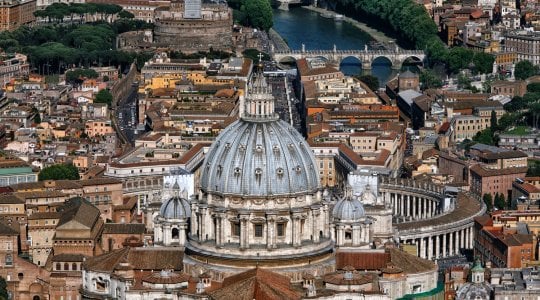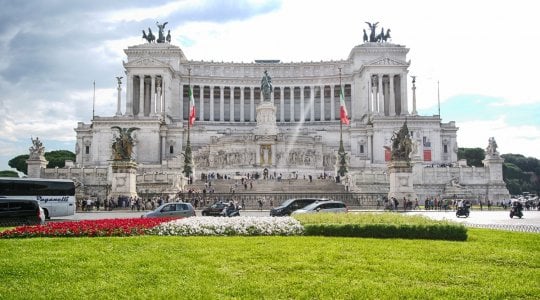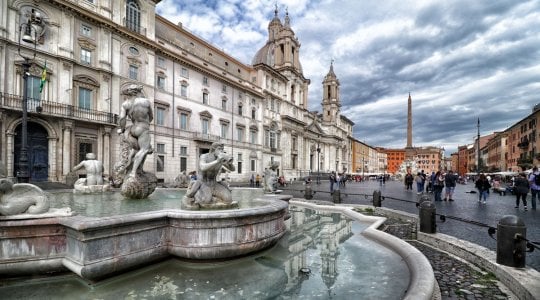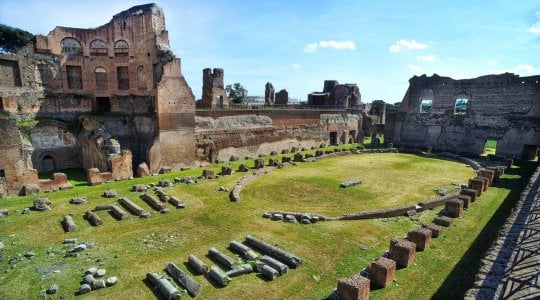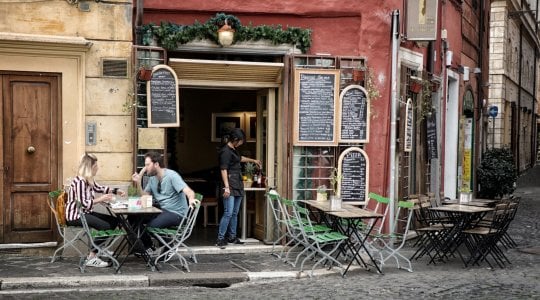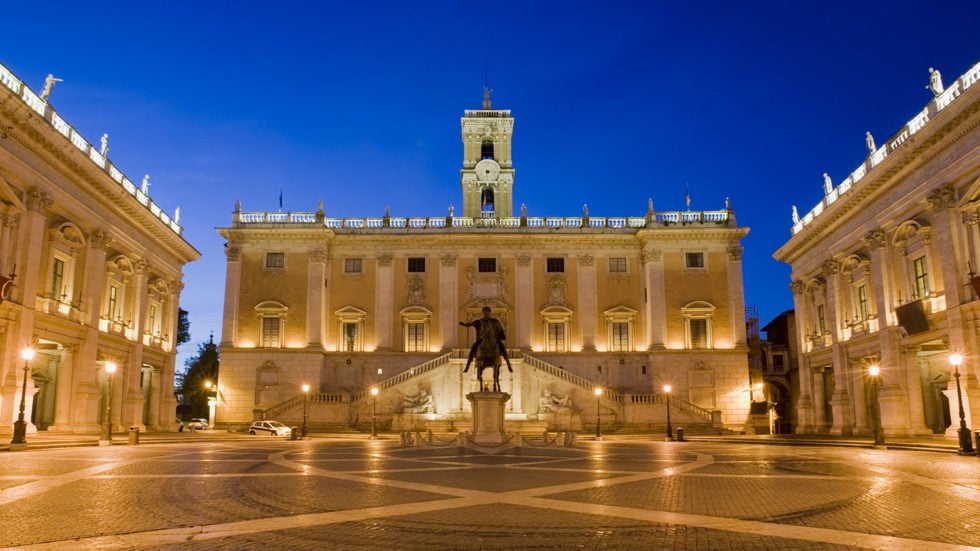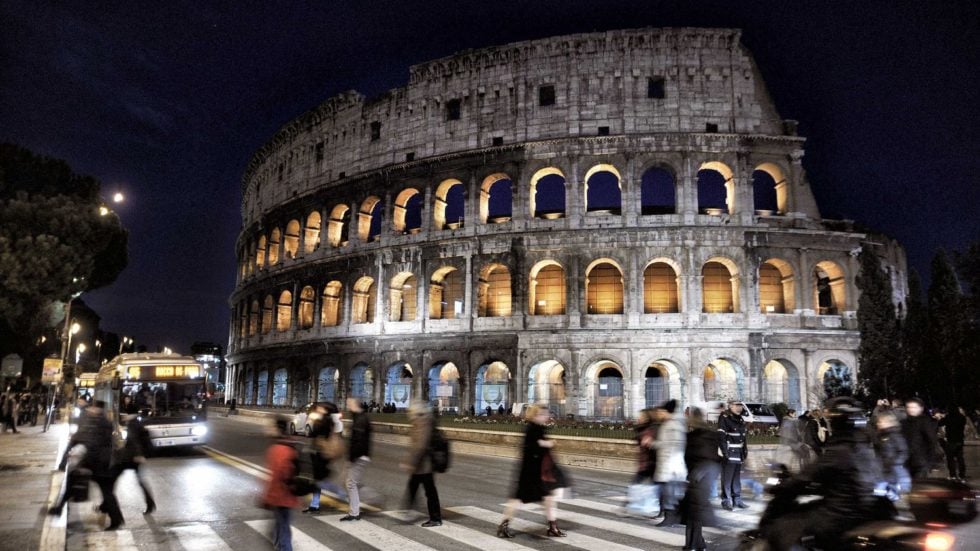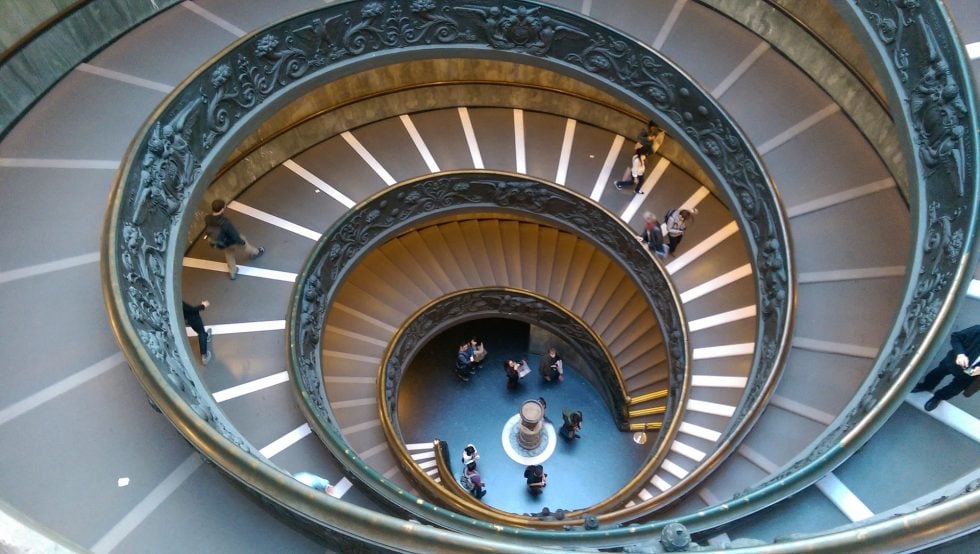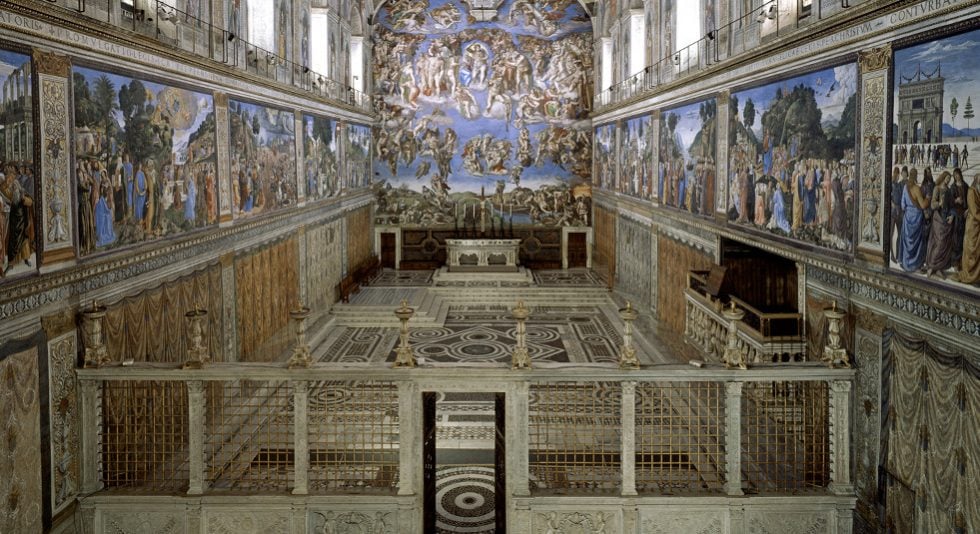Rivenditore ufficiale Roma e Vaticano – Giubileo 2025
Omnia Card 72h: attrazioni incluse e scontate a Roma
In questo articolo troverai tutte le informazioni sulle attrazioni incluse e scontate a Roma con Omnia Card 72h. Per scoprire tutto su Omnia Card, consulta il nostro articolo dedicato “Omnia Card 72 – Guida Completa 2025“.
Cosa è incluso nella Omnia Card?
La Omnia Card 72h include l’accesso prioritario alle attrazioni più visitate di Roma e della Città del Vaticano, oltre al pass per i trasporti pubblici di Roma e l’accesso Open Bus per 3 giorni.
Come funziona la Omnia Card 72h?
La Omnia Card 72h include anche il Roma Pass. Con questo pass, puoi usufruire di ingresso gratuito a 2 attrazioni a tua scelta da una selezione di musei, monumenti e siti culturali, che puoi trovare in questo articolo. Per tutte le altre attrazioni partner, hai diritto a tariffe scontate durante l’intera validità del tuo Omnia Rome Pass.
Omnia Card 72h: included and discounted attractions
Scopri tutte le attrazioni incluse con la Omnia Card 72h e risparmia fino al 50%. Scopri perché la Omnia Card 72h è davvero vantaggiosa! Il listino prezzi per le attrazioni scontate con la Omnia Card è stato aggiornato per il 2025.
MONUMENTI E SITI ARCHEOLOGICI
– Parco Archeologico del Colosseo
Il Parco Archeologico del Colosseo comprende il Colosseo, il Foro Romano e il Palatino. Il Colosseo è il più grande anfiteatro antico mai costruito, con una capacità di 50.000 a 80.000 spettatori. Inaugurato nel 80 d.C., ospitò epiche battaglie di gladiatori, battute di caccia e persino combattimenti navali simulati. Il Colosseo si trova nel cuore di Roma, tra i Fori Imperiali e Piazza Venezia, e si trova direttamente di fronte alla fermata della metro “Colosseo” sulla linea B.
Con la Omnia Card 72h, puoi accedere al Colosseo con il massimo risparmio:
Ingresso gratuito se selezionato come una delle 2 attrazioni incluse → Costo: €0
Ingresso scontato se scelto tra le attrazioni partner → Costo: €11.50
- Free entry if selected as one of the 2 included attractions → Cost: €0
- Discounted entry if chosen from the partner attractions → Cost: €11.50
– Castel Sant’Angelo
Costruito tra il 123 e il 139 d.C., Castel Sant’Angelo si trova nel cuore di Roma, affacciato sulle rive del Tevere. Nel Medioevo, fu trasformato in una fortezza e rifugio papale, grazie al Passetto di Borgo, il corridoio segreto che lo collega alla Basilica di San Pietro. Oggi, è un museo statale dove è possibile esplorare le terrazze con vista sul Vaticano, gli appartamenti papali e la camera di sepoltura originale.
Con la Omnia Card 72h, puoi godere di sconti flessibili sull’ingresso a Castel Sant’Angelo:
Ingresso gratuito se selezionato come una delle 2 attrazioni incluse → Costo: €0
Ingresso scontato se scelto tra le attrazioni partner → Costo: €6.50
- Free entry if selected as one of the 2 included attractions → Cost: €0
- Discounted entry if chosen from the partner attractions → Cost: €6.50
– Circo Massimo
Il Circo Massimo si trova in Via del Circo Massimo ed è facilmente raggiungibile con la metro linea B, scendendo alla fermata “Circo Massimo”. Era lo stadio più grande dell’Antica Roma, con una capacità fino a 150.000 spettatori. Espanso sotto Giulio Cesare, il Circo Massimo divenne famoso per le corse delle bighe, gli eventi religiosi e le celebrazioni pubbliche, diventando il cuore pulsante dell’intrattenimento romano.
Con la Omnia Card 72h, puoi godere di sconti flessibili sull’ingresso al Circo Massimo:
Ingresso gratuito se selezionato come una delle 2 attrazioni incluse → Costo: €0
Ingresso scontato se scelto tra le attrazioni partner → Costo: €4
- Free entry if selected as one of the 2 included attractions → Cost: €0
- Discounted entry if chosen from the partner attractions → Cost: €4
– Mausoleo di Augusto
Il Mausoleo di Augusto, costruito nel 28 a.C. da Ottaviano Augusto, è la tomba circolare più grande conosciuta dell’antichità e il luogo di sepoltura del primo imperatore romano. Questo importante monumento romano merita sicuramente una visita. Costruito in mattoni rivestiti di travertino, una volta era coronato da statue e cipressi, affiancato da due obelischi, ora spostati in Piazza dell’Esquilino e al Quirinale.
Con la Omnia Card 72h, puoi godere di sconti flessibili sull’ingresso al Mausoleo di Augusto:
Ingresso gratuito se selezionato come una delle 2 attrazioni incluse → Costo: €0
Ingresso scontato se scelto tra le attrazioni partner → Costo: €5
- Free entry if selected as one of the 2 included attractions → Cost: €0
- Discounted entry if chosen from the partner attractions → Cost: €5
– Museo dell’Ara Pacis
L’Ara Pacis, uno dei monumenti più significativi di Roma, fu inaugurato da Augusto nel 9 a.C. Rappresenta un altare sacrificale realizzato interamente in marmo di Carrara, dove solo le Vestali e i sacerdoti potevano entrare. È l’unico monumento a Roma ospitato all’interno di un museo, il che rende il biglietto d’ingresso relativamente costoso.
Con la Omnia Card 72h, puoi godere di sconti flessibili sull’ingresso all’Ara Pacis:
Ingresso gratuito se selezionato come una delle 2 attrazioni incluse → Costo: €0
Ingresso scontato se scelto tra le attrazioni partner → Costo: €8.50
- Free entry if selected as one of the 2 included attractions → Cost: €0
- Discounted entry if chosen from the partner attractions → Cost: €8.50
– Terme di Caracalla
Le Terme di Caracalla, costruite tra il 212 e il 216 d.C. dall’imperatore Caracalla, furono uno dei complessi termali più grandi e lussuosi dell’antica Roma, capaci di ospitare fino a 1.600 persone. Le terme si trovano sul Colle Aventino e sono facilmente raggiungibili con la metro linea B (scendere alla stazione “Circo Massimo”) o con il bus (linee 118, 160 e 628, fermata “Terme di Caracalla”).
Con la Omnia Card 72h, puoi accedere alle Terme di Caracalla con il massimo risparmio:
Ingresso gratuito se selezionato come una delle 2 attrazioni incluse → Costo: €0
Ingresso scontato se scelto tra le attrazioni partner → Costo: €2
- Free entry if selected as one of the 2 included attractions → Cost: €0
- Discounted entry if chosen from the partner attractions → Cost: €2
– Villa di Massenzio e Mausoleo di Romolo
Situato lungo l’Antica Via Appia, il complesso della Villa di Massenzio fu costruito nel 306 d.C. dall’Imperatore Massenzio. Comprende tre strutture principali: il palazzo imperiale, il Circo di Massenzio (l’unico circo romano ben conservato ancora in piedi) e il Mausoleo di Romolo, costruito per suo figlio Valerio Romolo. Il mausoleo è particolarmente notevole per la sua cripta ancora visibile, con un corridoio a forma di anello e nicchie per sarcofagi.
Con la Omnia Card 72h, puoi accedere alla Villa di Massenzio con il massimo risparmio:
Ingresso gratuito se selezionato come una delle 2 attrazioni incluse → Costo: €0
Ingresso scontato se scelto tra le attrazioni partner → Costo: €0
- Free entry if selected as one of the 2 included attractions → Cost: €0
- Discounted entry if chosen from the partner attractions → Cost: €0
– Area Archeologica di Largo Argentina
L’Area Archeologica di Largo Argentina, nota come la Area Sacra, conserva i resti di quattro templi repubblicani risalenti dal IV al II secolo a.C. Largo Argentina è anche famosa per essere il sito vicino alla Curia di Pompeo dove Giulio Cesare fu assassinato nel 44 a.C. Dal 2023, l’area è stata resa accessibile tramite passerelle elevate che permettono ai visitatori di passeggiare tra le rovine restaurate, rendendola uno dei luoghi più trascurati e affascinanti di Roma.
Con la Omnia Card 72h, puoi godere di sconti flessibili sull’ingresso a Largo Argentina:
Ingresso gratuito se selezionato come una delle 2 attrazioni incluse → Costo: €0
Ingresso scontato se scelto tra le attrazioni partner → Costo: €4
- Free entry if selected as one of the 2 included attractions → Cost: €0
- Discounted entry if chosen from the partner attractions → Cost: €4
– Foro Imperiale, Foro Romano, Palatino
Con la Omnia Card 72h, puoi godere di sconti flessibili sull’ingresso al Foro Imperiale, Foro Romano, Palatino:
Ingresso gratuito se selezionato come una delle 2 attrazioni incluse → Costo: €0
Ingresso scontato se scelto tra le attrazioni partner → Costo: €11.50
- Free entry if selected as one of the 2 included attractions → Cost: €0
- Discounted entry if chosen from the partner attractions → Cost: €11.50
– Parco Archeologico della Via Appia Antica
Con la Omnia Card 72h, puoi godere di sconti flessibili sull’ingresso al Parco Archeologico della Via Appia Antica:
Ingresso gratuito se selezionato come una delle 2 attrazioni incluse → Costo: €0
Ingresso scontato se scelto tra le attrazioni partner → Costo: €4
- Free entry if selected as one of the 2 included attractions → Cost: €0
- Discounted entry if chosen from the partner attractions → Cost: €4
– Parco Archeologico di Ostia Antica
Con la Omnia Card 72h, puoi accedere al Parco Archeologico di Ostia Antica con il massimo risparmio:
Ingresso gratuito se selezionato come una delle 2 attrazioni incluse → Costo: €0
Ingresso scontato se scelto tra le attrazioni partner → Costo: €2
- Free entry if selected as one of the 2 included attractions → Cost: €0
- Discounted entry if chosen from the partner attractions → Cost: €2
– Palazzo Valentini
Con la Omnia Card 72h, puoi accedere al Palazzo Valentini e alle Domus Romane con il massimo risparmio:
Ingresso gratuito se selezionato come una delle 2 attrazioni incluse → Costo: €0
Ingresso scontato se scelto tra le attrazioni partner → Costo: €8
- Free entry if selected as one of the 2 included attractions → Cost: €0
- Discounted entry if chosen from the partner attractions → Cost: €8
MUSEI DI ROMA
– Musei Capitolini
Con la Omnia Card 72h, puoi accedere ai Musei Capitolini con il massimo risparmio:
Ingresso gratuito se selezionato come una delle 2 attrazioni incluse → Costo: €0
Ingresso scontato se scelto tra le attrazioni partner → Costo: €9.50
- Free entry if selected as one of the 2 included attractions → Cost: €0
- Discounted entry if chosen from the partner attractions → Cost: €9.50
-
Centrale Montemartini
Con la Omnia Card 72h, puoi accedere alla Centrale Montemartini con il massimo risparmio:
Ingresso gratuito se selezionato come una delle 2 attrazioni incluse → Costo: €0
Ingresso scontato se scelto tra le attrazioni partner → Costo: €6.50
- Free entry if selected as one of the 2 included attractions → Cost: €0
- Discounted entry if chosen from the partner attractions → Cost: €6.50
-
Musei di Villa Torlonia
Con la Omnia Card 72h, puoi accedere ai Musei di Villa Torlonia con il massimo risparmio:
Ingresso gratuito se selezionato come una delle 2 attrazioni incluse → Costo: €0
Ingresso scontato se scelto tra le attrazioni partner → Costo: €12
- Free entry if selected as one of the 2 included attractions → Cost: €0
- Discounted entry if chosen from the partner attractions → Cost: €12
-
Museo Carlo Bilotti: Aranciera di Villa Borghese
Con la Omnia Card 72h, puoi accedere al Museo Carlo Bilotti con il massimo risparmio:
Ingresso gratuito se selezionato come una delle 2 attrazioni incluse → Costo: €0
Ingresso scontato se scelto tra le attrazioni partner → Costo: €0
- Free entry if selected as one of the 2 included attractions → Cost: €0
- Discounted entry if chosen from the partner attractions → Cost: €0
- Museo Civico di Zoologia
Con la Omnia Card 72h, puoi accedere al Museo Civico di Zoologia con il massimo risparmio:
Ingresso gratuito se selezionato come una delle 2 attrazioni incluse → Costo: €0
Ingresso scontato se scelto tra le attrazioni partner → Costo: €5.50
- Free entry if selected as one of the 2 included attractions → Cost: €0
- Discounted entry if chosen from the partner attractions → Cost: €5.50
- Museo della Repubblica Romana e Memoriale Garibaldino
Con la Omnia Card 72h, puoi accedere al Museo della Repubblica Romana e al Memoriale Garibaldino con il massimo risparmio:
Ingresso gratuito se selezionato come una delle 2 attrazioni incluse → Costo: €0
Ingresso scontato se scelto tra le attrazioni partner → Costo: €0
- Free entry if selected as one of the 2 included attractions → Cost: €0
- Discounted entry if chosen from the partner attractions → Cost: €0
- Museo delle Civiltà
Con la Omnia Card 72h, puoi accedere al Museo delle Civiltà con il massimo risparmio:
Ingresso gratuito se selezionato come una delle 2 attrazioni incluse → Costo: €0
Ingresso scontato se scelto tra le attrazioni partner → Costo: €5
- Free entry if selected as one of the 2 included attractions → Cost: €0
- Discounted entry if chosen from the partner attractions → Cost: €5
- Museo delle Mura
Con la Omnia Card 72h, puoi accedere al Museo delle Mura con il massimo risparmio:
Ingresso gratuito se selezionato come una delle 2 attrazioni incluse → Costo: €0
Ingresso scontato se scelto tra le attrazioni partner → Costo: €0
- Free entry if selected as one of the 2 included attractions → Cost: €0
- Discounted entry if chosen from the partner attractions → Cost: €0
- Museo di Roma: Palazzo Braschi
Con la Omnia Card 72h, puoi accedere al Museo di Roma con il massimo risparmio:
Ingresso gratuito se selezionato come una delle 2 attrazioni incluse → Costo: €0
Ingresso scontato se scelto tra le attrazioni partner → Costo: €7.50
- Free entry if selected as one of the 2 included attractions → Cost: €0
- Discounted entry if chosen from the partner attractions → Cost: €7.50
-
Museo di Roma in Trastevere
Con la Omnia Card 72h, puoi accedere al Museo di Roma in Trastevere con il massimo risparmio:
Ingresso gratuito se selezionato come una delle 2 attrazioni incluse → Costo: €0
Ingresso scontato se scelto tra le attrazioni partner → Costo: €5
- Free entry if selected as one of the 2 included attractions → Cost: €0
- Discounted entry if chosen from the partner attractions → Cost: €5
- Museo di Casal de’ Pazzi – Sito Archeologico del Pleistocene
Con la Omnia Card 72h, puoi accedere al Museo di Casal de’ Pazzi con il massimo risparmio:
Ingresso gratuito se selezionato come una delle 2 attrazioni incluse → Costo: €0
Ingresso scontato se scelto tra le attrazioni partner → Costo: €0
- Free entry if selected as one of the 2 included attractions → Cost: €0
- Discounted entry if chosen from the partner attractions → Cost: €0
- Museo Napoleone
Con la Omnia Card 72h, puoi accedere al Museo Napoleone con il massimo risparmio:
Ingresso gratuito se selezionato come una delle 2 attrazioni incluse → Costo: €0
Ingresso scontato se scelto tra le attrazioni partner → Costo: €0
- Free entry if selected as one of the 2 included attractions → Cost: €0
- Discounted entry if chosen from the partner attractions → Cost: €0
- Giovanni Barracco di Scultura Antica
Con la Omnia Card 72h, puoi accedere al Museo Barracco con il massimo risparmio:
Ingresso gratuito se selezionato come una delle 2 attrazioni incluse → Costo: €0
Ingresso scontato se scelto tra le attrazioni partner → Costo: €0
- Free entry if selected as one of the 2 included attractions → Cost: €0
- Discounted entry if chosen from the partner attractions → Cost: €0
-
Museo Nazionale degli Strumenti Musicali
Con la Omnia Card 72h, puoi accedere al Museo Nazionale degli Strumenti Musicali con il massimo risparmio:
Ingresso gratuito se selezionato come una delle 2 attrazioni incluse → Costo: €0
Ingresso scontato se scelto tra le attrazioni partner → Costo: €3
- Free entry if selected as one of the 2 included attractions → Cost: €0
- Discounted entry if chosen from the partner attractions → Cost: €3
-
Museo Nazionale Etrusco di Villa Giulia
Con la Omnia Card 72h, puoi accedere al Museo Nazionale Etrusco di Villa Giulia con il massimo risparmio:
Ingresso gratuito se selezionato come una delle 2 attrazioni incluse → Costo: €0
Ingresso scontato se scelto tra le attrazioni partner → Costo: €4
- Free entry if selected as one of the 2 included attractions → Cost: €0
- Discounted entry if chosen from the partner attractions → Cost: €4
- Mercati di Traiano: Museo dei Fori Imperiali
Con la Omnia Card 72h, puoi accedere ai Mercati di Traiano – Museo dei Fori Imperiali con il massimo risparmio:
Ingresso gratuito se selezionato come una delle 2 attrazioni incluse → Costo: €0
Ingresso scontato se scelto tra le attrazioni partner → Costo: €9.50
- Free entry if selected as one of the 2 included attractions → Cost: €0
- Discounted entry if chosen from the partner attractions → Cost: €9.50
-
Museo Nazionale Romano
Con la Omnia Card 72h, puoi accedere al Museo Nazionale Romano con il massimo risparmio:
Ingresso gratuito se selezionato come una delle 2 attrazioni incluse → Costo: €0
Ingresso scontato se scelto tra le attrazioni partner → Costo: €8
- Free entry if selected as one of the 2 included attractions → Cost: €0
- Discounted entry if chosen from the partner attractions → Cost: €8
-
Accademia Nazionale di San Luca
Con la Omnia Card 72h, puoi accedere all’Accademia Nazionale di San Luca con il massimo risparmio:
Ingresso gratuito se selezionato come una delle 2 attrazioni incluse → Costo: €0
Ingresso scontato se scelto tra le attrazioni partner → Costo: €0
- Free entry if selected as one of the 2 included attractions → Cost: €0
- Discounted entry if chosen from the partner attractions → Cost: €0
- Museo Pietro Canonica: Villa Borghese
Con la Omnia Card 72h, puoi accedere al Museo Pietro Canonica con il massimo risparmio:
Ingresso gratuito se selezionato come una delle 2 attrazioni incluse → Costo: €0
Ingresso scontato se scelto tra le attrazioni partner → Costo: €0
- Free entry if selected as one of the 2 included attractions → Cost: €0
- Discounted entry if chosen from the partner attractions → Cost: €0
GALLERIE D’ARTE
- Galleria Borghese
Con la Omnia Card 72h, puoi accedere alla Galleria Borghese con il massimo risparmio:
Ingresso gratuito se selezionato come una delle 2 attrazioni incluse → Costo: €0
Ingresso scontato se scelto tra le attrazioni partner → Costo: €6.50
- Free entry if selected as one of the 2 included attractions → Cost: €0
- Discounted entry if chosen from the partner attractions → Cost: €6.50
- Galleria Spada
Con la Omnia Card 72h, puoi accedere alla Galleria Spada con il massimo risparmio:
Ingresso gratuito se selezionato come una delle 2 attrazioni incluse → Costo: €0
Ingresso scontato se scelto tra le attrazioni partner → Costo: €3
- Free entry if selected as one of the 2 included attractions → Cost: €0
- Discounted entry if chosen from the partner attractions → Cost: €3
- Galleria d’Arte Moderna di Roma
Con la Omnia Card 72h, puoi accedere alla Galleria d’Arte Moderna di Roma con il massimo risparmio:
Ingresso gratuito se selezionato come una delle 2 attrazioni incluse → Costo: €0
Ingresso scontato se scelto tra le attrazioni partner → Costo: €6.50
- Free entry if selected as one of the 2 included attractions → Cost: €0
- Discounted entry if chosen from the partner attractions → Cost: €6.50
- Galleria Nazionale d’Arte Moderna e Contemporanea
Con la Omnia Card 72h, puoi accedere alla Galleria Nazionale d’Arte Moderna e Contemporanea con il massimo risparmio:
Ingresso gratuito se selezionato come una delle 2 attrazioni incluse → Costo: €0
Ingresso scontato se scelto tra le attrazioni partner → Costo: €5
- Free entry if selected as one of the 2 included attractions → Cost: €0
- Discounted entry if chosen from the partner attractions → Cost: €5
- Galleria Nazionale d’Arte Antica
Con la Omnia Card 72h, puoi accedere alla Galleria Nazionale d’Arte Antica con il massimo risparmio:
Ingresso gratuito se selezionato come una delle 2 attrazioni incluse → Costo: €0
Ingresso scontato se scelto tra le attrazioni partner → Costo: €2
- Free entry if selected as one of the 2 included attractions → Cost: €0
- Discounted entry if chosen from the partner attractions → Cost: €2
- MAXXI
Con la Omnia Card 72h, puoi accedere al MAXXI con il massimo risparmio:
Ingresso gratuito se selezionato come una delle 2 attrazioni incluse → Costo: €0
Ingresso scontato se scelto tra le attrazioni partner → Costo: €12
- Free entry if selected as one of the 2 included attractions → Cost: €0
- Discounted entry if chosen from the partner attractions → Cost: €12
La Omnia Card 72h ti permette di esplorare Roma con comodità, risparmio e accesso privilegiato alle numerose attrazioni della città: dai monumenti e musei alle gallerie d’arte. Scegli i benefici inclusi che fanno al caso tuo e pianifica il tuo viaggio risparmiando tempo e denaro.
Puoi acquistare la Omnia Card 72h in modo sicuro e protetto con pochi clic tramite il nostro canale rivenditore autorizzato qui: romevaticancard.com
